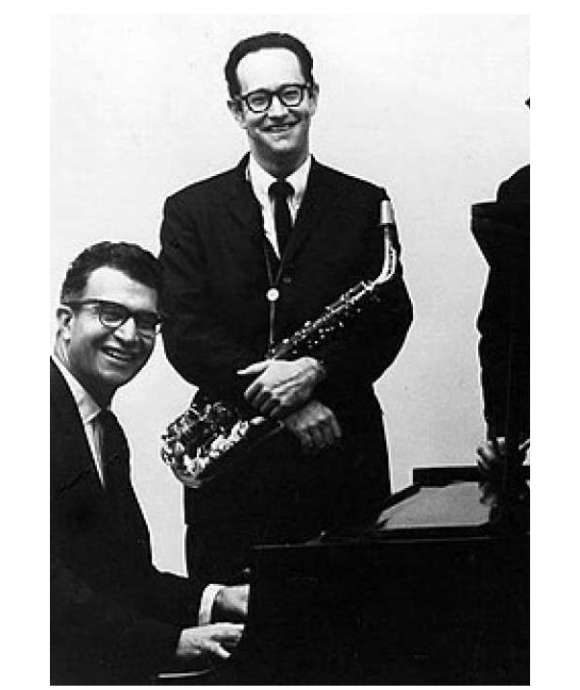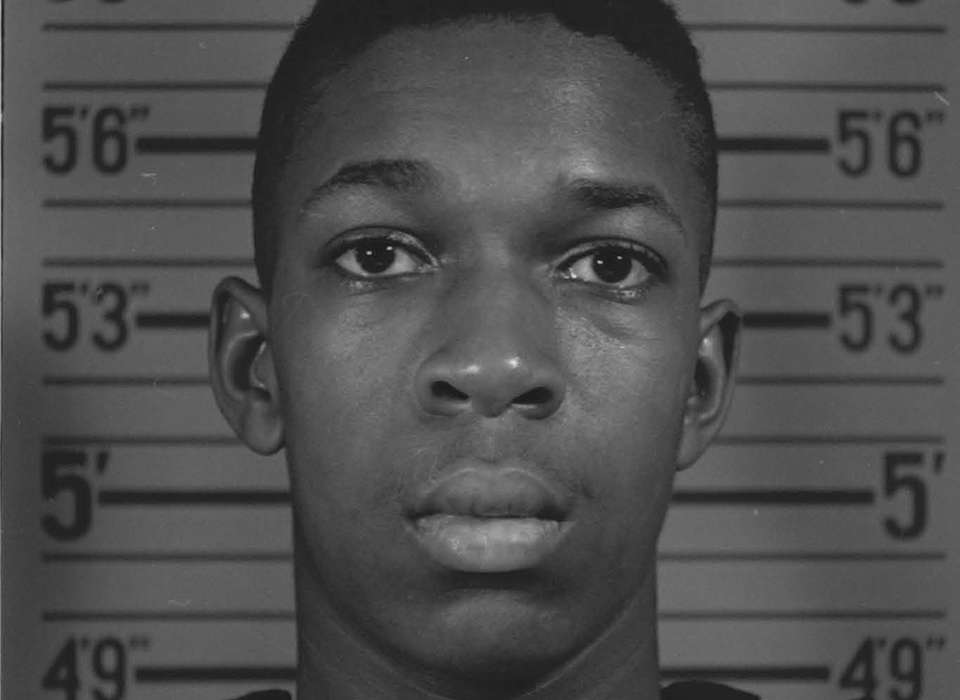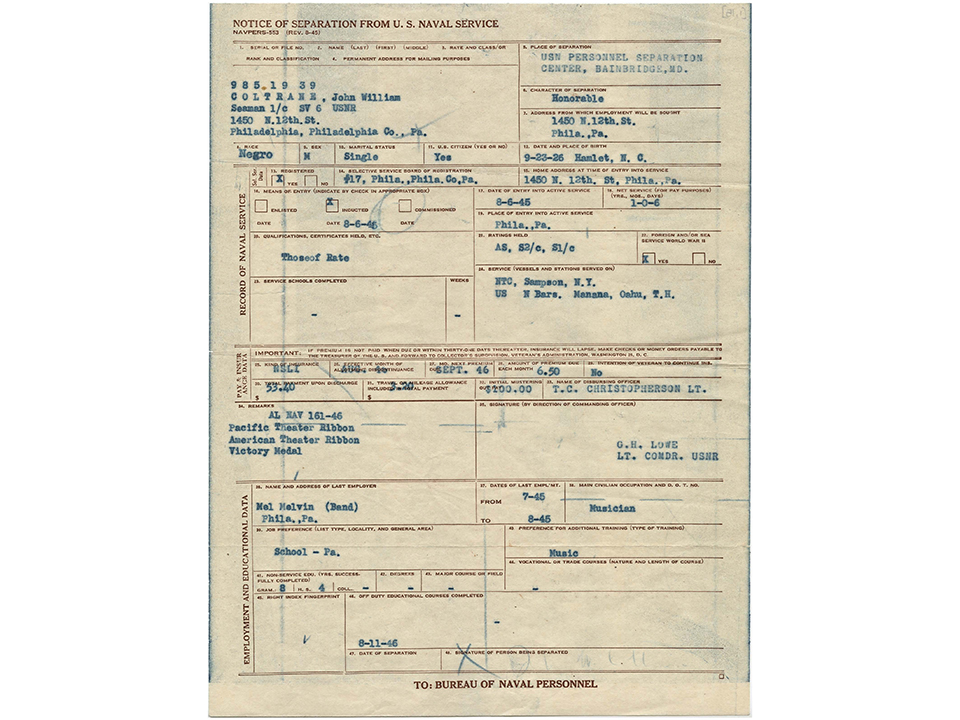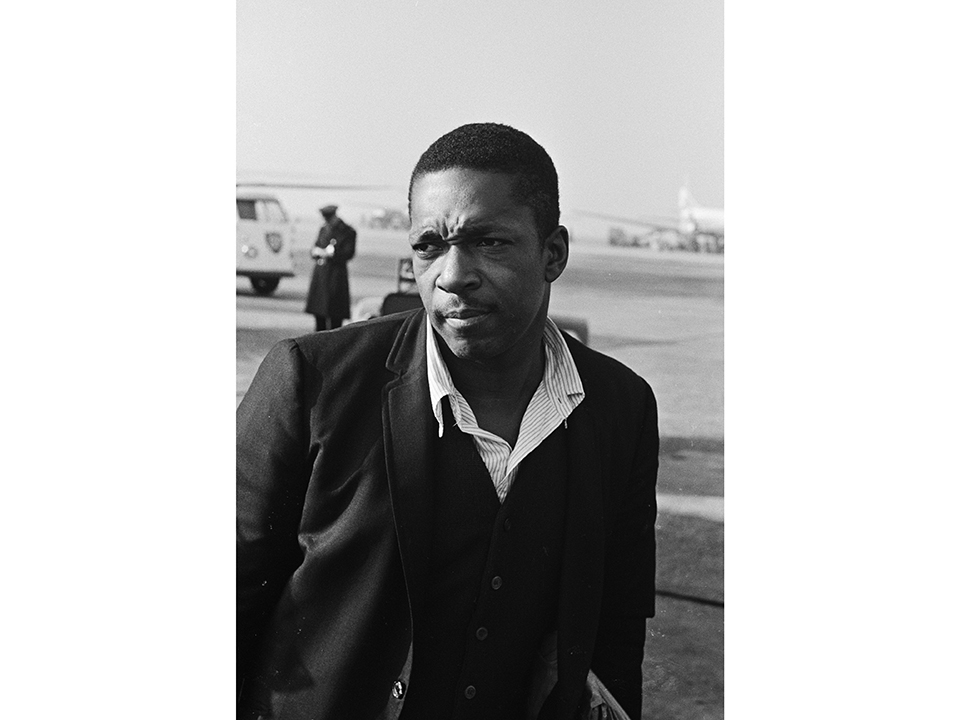John William Coltrane is one of the most influential jazz musicians to ever play, and today remains even more relevant than during his life. A saxophonist, he was initially drawn to the popular jazz formats of bebop and hard bop, before eventually becoming one of the guiding forces behind free jazz. Later in his short life, he became a very spiritual man and this was reflected in his music. However, before the genius of his musical talent could surface, he enlisted in the US Navy to serve his country during World War II.
Born in Hamlet, North Carolina on September 23, 1926, Coltrane’s family moved to High Point when he was a child. He was raised in a religious family, his father and grandfather both preached, and at early age he was exposed to gospel music. This had a significant influence on his life as he grew into adulthood. When he was 12, his father and grandfather both died, and young Coltrane took to playing the clarinet as a way to escape the sadness around him. While he was attending William Penn High School in High Point, North Carolina, he played clarinet in local bands and eventually switched to the saxophone.
Coltrane evidently decided that instead of being drafted into the Army, he preferred the Navy, and on August 6, 1945 he enlisted in the US Navy. On his “US Navy Enlisted Personal Qualification Card,” he wrote under the heading, for skills and machines, “Musician-played saxophone and clarinet in orchestras during various musical engagements, both part time and full time.” He was issued serial number 9851939. He weighed 168 pounds and was 68 inches tall. The military was segregated during the war; therefore, Coltrane was sent to the black section of the Naval Training Center at Sampson in upstate New York. By the time he completed basic training at the end of October, the war was over. He was sent to the Naval Receiving Station in Shoemaker, California, and remained there for a month while he was processed and waited for his duty assignment. On November 28, 1945, he received orders to report to Manana, Oahu, Hawaii. Manana is where Coltrane served his time while in the Navy. He was assigned to a Navy band, the Melody Masters, and played clarinet and alto saxophone. While in Hawaii, on March 1, 1946, he was promoted to S1c. Navy bands were used to boast morale, and with the war over the military was downsizing. After serving only one year of his two year enlistment, he was sent to Bainbridge, Maryland where he was discharged on August 11, 1946.
Following his discharge from the Navy, he went home to Philadelphia, Pennsylvania. The post war years in Philadelphia offered a vibrant jazz scene dominated by bebop which Coltrane fully embraced. He also used the GI Bill to take music courses under the instruction of Dennis Sandole, who taught young Coltrane music theory and harmonic technique. Coltrane was not content with just studying music; he became very active on the music scene as a journeyman playing his saxophone whenever he could. He began to gain a reputation and was not only in demand on the local circuit, but big bands of national prominence recognized his talent. One of those was Dizzy Gillespie, who suggested Coltrane should switch from alto to tenor saxophone. From 1946 through 1955, Coltrane was in many ways a hired gun waiting for the next gig. It was during this time he developed a heroin habit, which he remained addicted to for six years.
Coltrane’s commitment and dedication to his craft, along with the constant touring, paid off in 1955. That summer the legendary trumpeter, Miles Davis, invited him to New York City. From 1955 to 1959, under the direction of Davis, Coltrane sharpened his skills and played beside Davis which propelled him into the national spot light. In 1958, Coltrane recorded his own music with his own band, and the result was Blue Train recorded for the famous Blue Note label. This is the recording which showcases Coltrane’s talents as not only a great bandleader but composer as well. The music is hard bop and at the same time the sensitive side of Coltrane appears. The title track is one of the most recognized music arrangements from the 1960s. Just a year later Coltrane appeared on the Davis masterpiece Kind of Blue, which is considered by many as the definitive jazz record. Kind of Blue has a very slow relaxing quality about it, which pulls the listener in. That same year Coltrane released the solo recording Giant Steps. Jazz journalist Ira Gitler said the music of John Coltrane was like listening to “sheets of sound.”
By the early 1960s, John Coltrane was one of the most recognized names in all music genres throughout the world. He was also one of the highest paid, with royalties coming in from all of the music he recorded and his constant touring; however, there was nothing flamboyant about his lifestyle. In interviews he speaks a great deal of his spirituality. He was recognized as a very kind, humble, and sensitive individual. During this period he released his masterpiece, A Love Supreme, recorded in 1964. With A Love Supreme, Coltrane is giving thanks for his withdrawal from drug addiction and recognizes his personal spirituality. Recorded with a four piece band in two days, the beauty of this piece of music cannot be overstated. It remains to this day one of the premier jazz recordings of all time.
Coltrane’s music was changing, it was getting louder and more obscure. Even his performances took on a different character. He played sets which lasted three to four hours; a solo would last over 30 minutes. He remained very productive and two pieces in particular, set him apart from all other jazz musicians at the time, Ascension (1965) and Om (1968). Each of these is a difficult listen, as all prior musical principles are ignored and at times the musicians appear to have complete freedom while playing their instruments.
Alcoholism and heroin addiction took a toll on his life, and John Coltrane died of liver failure in July 1967 at the age of 40. The generation who fought in World War II is referred to as the “Greatest Generation,” and John Coltrane was part of that generation. Today he is recognized as a jazz legend, one of the most influential jazz musicians ever. What direction would his music have gone? Would he have explored more spiritual or worldly musical genres? We can only speculate. His body of work speaks for itself, consisting of over 50 recordings, among them Kind of Blue and A Love Supreme.

Touring with the Wolf Pack Band: Dave Brubeck and World War II
World War II shaped the kind of person, musician, and composer Dave Brubeck became.
Dan Olmsted
Cite this article:
MLA Citation:
APA Citation:
Chicago Style Citation:










![Max Fuchs, New York City cantor, sings as Rabbi Sydney [sic] Lefkowitz, Richmond, VA, conducts the first Jewish services from Germany.](/sites/default/files/styles/max_650x650/public/2025-10/image1.jpg)
